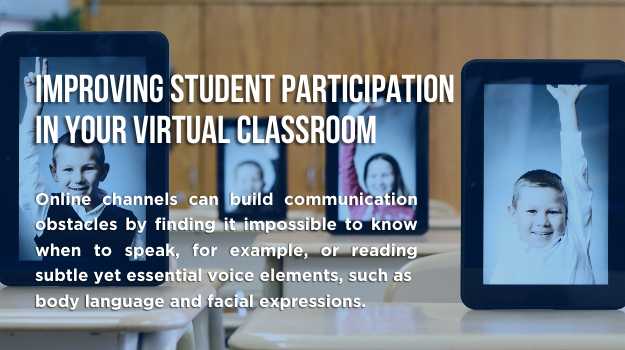
Some students regularly raise their hands to participate in the discussion in every school, and others are unwilling to engage. If they’re introverted, like to ponder for a bit before they contribute, or have a rough day, it can be hard to get kids into conversations that are hesitant to add their voices.
During remote instruction, we have learned from several teachers about the difficulties of bringing students to join. Online channels can build unnecessary communication obstacles by finding it impossible to know when to speak, for example, or reading subtle yet essential voice elements, such as body language and facial expressions.

Also, online discussions are often hindered by the variability of students’ access to technology and privacy concerns. As a result, many teachers have had to rely on students to submit work through isolated channels, such as email, which can leave back and forth between peers (and students and teachers) by the wayside.
Asking kids to contribute to interactive classes requires a bit of effort, it points out. Teachers present a variety of innovative techniques, both synchronous and asynchronous, to combine all children’s beliefs and voices—even the quietest.
For synchronous instruction, some teachers have claimed that they have translated conventional dialogue techniques from classroom to live video chats, while others have noticed that multimedia technologies have improved classroom engagement.
1. Spider Web Discussion
During remote learning, students can create their conversations on Google Meet. Before the live lecture, students asked questions individually and then discussed their answers at the start of the meeting as a jump-off point for a broader class conversation.
As students chatted on camera, the teacher would listen and draw lines on a sheet of paper to track the conversation flow, culminating in a spider web. At the end of the conversation, the teacher invites students to focus on the moment and ask what they heard about communicating, listening, and building on others’ ideas.
2. Using Chat to Ensure Understanding
Students can use the Google Chat feature to ask and answer questions or type emojis, including thumbs-ups or thumbs-downs, to demonstrate if they understood the idea.
To create an answer framework, students can create conventions around using the chat feature—as a collective, and they can agree to use only one emoji at a time. The practice can verify the student’s comprehension and motivate students to interact more with the class.

3. Flip the Classroom to Encourage More Profound Discussion
The combination of asynchronous and synchronous teaching performed well to stimulate student discussion in remote learning.
Teachers can teach asynchronous new material through filmed videos and online activities. At the beginning of the live class, students can briefly outline the topics they had studied together and then split into breakout rooms to discuss similar problems in small groups.
Flipping the classroom encourage teachers to devote less class time to direct instruction—and listening to students at the beginning of the class and in small groups can give light to areas of improvement.
Let us know your thoughts regarding these strategies to improve class participation!
